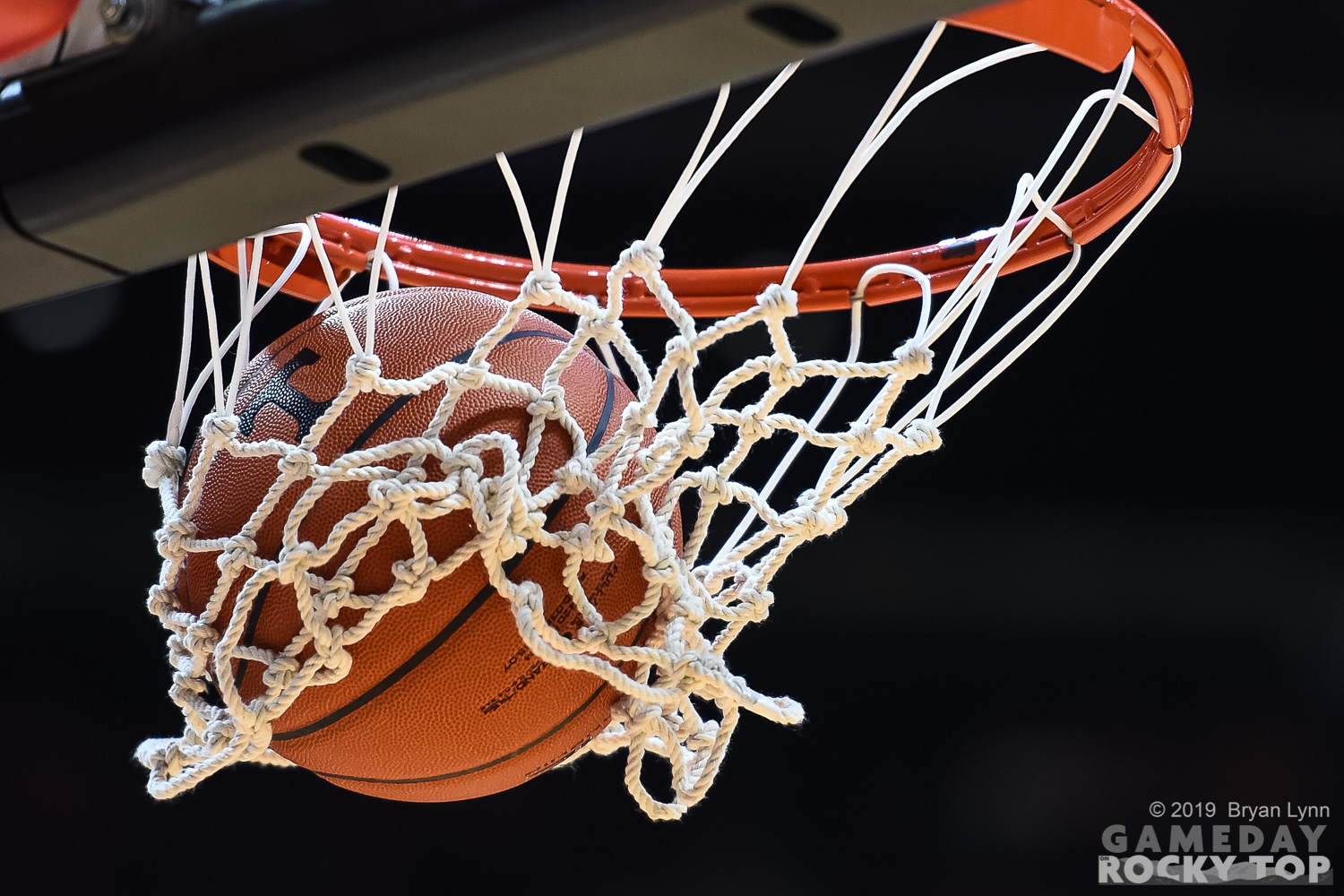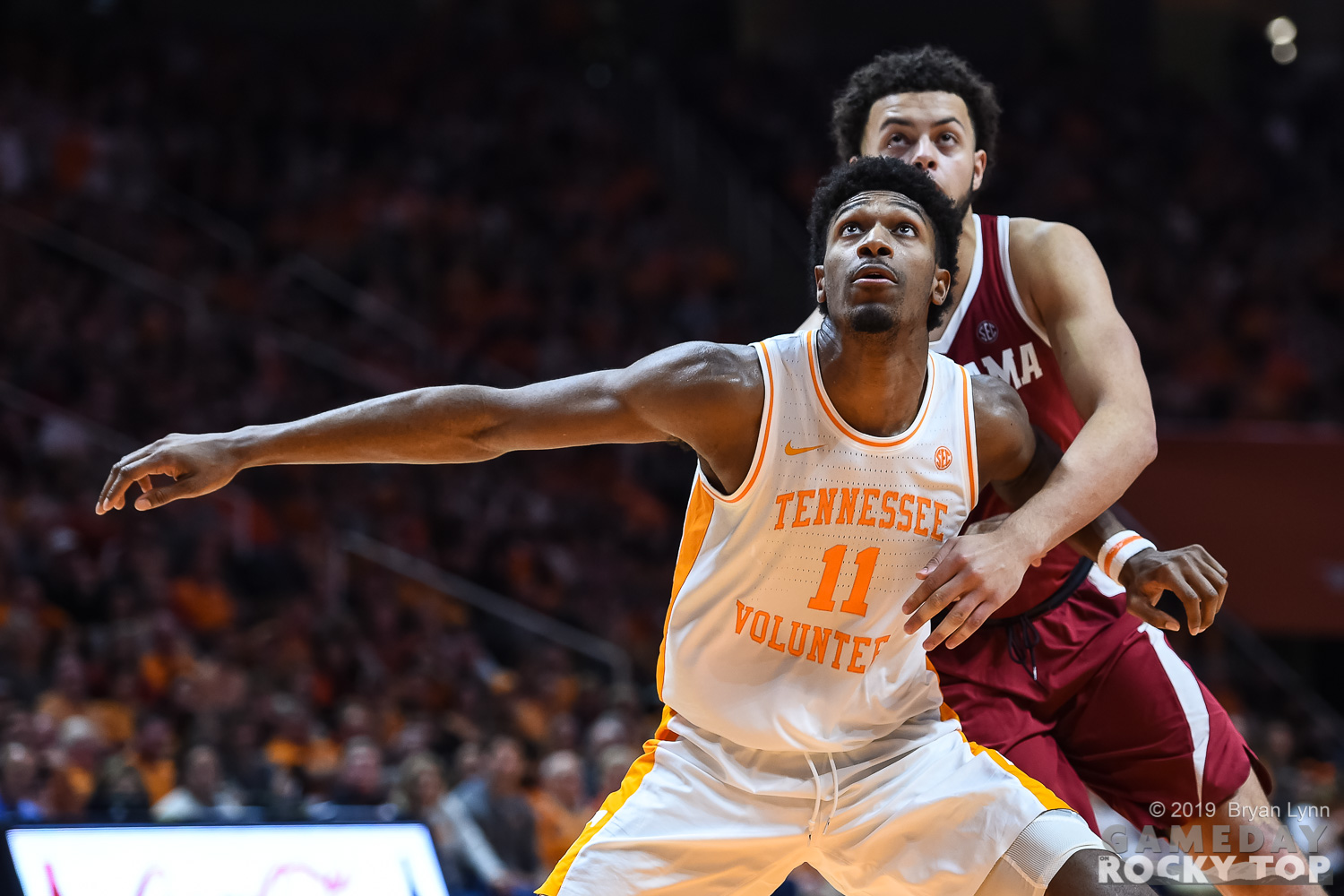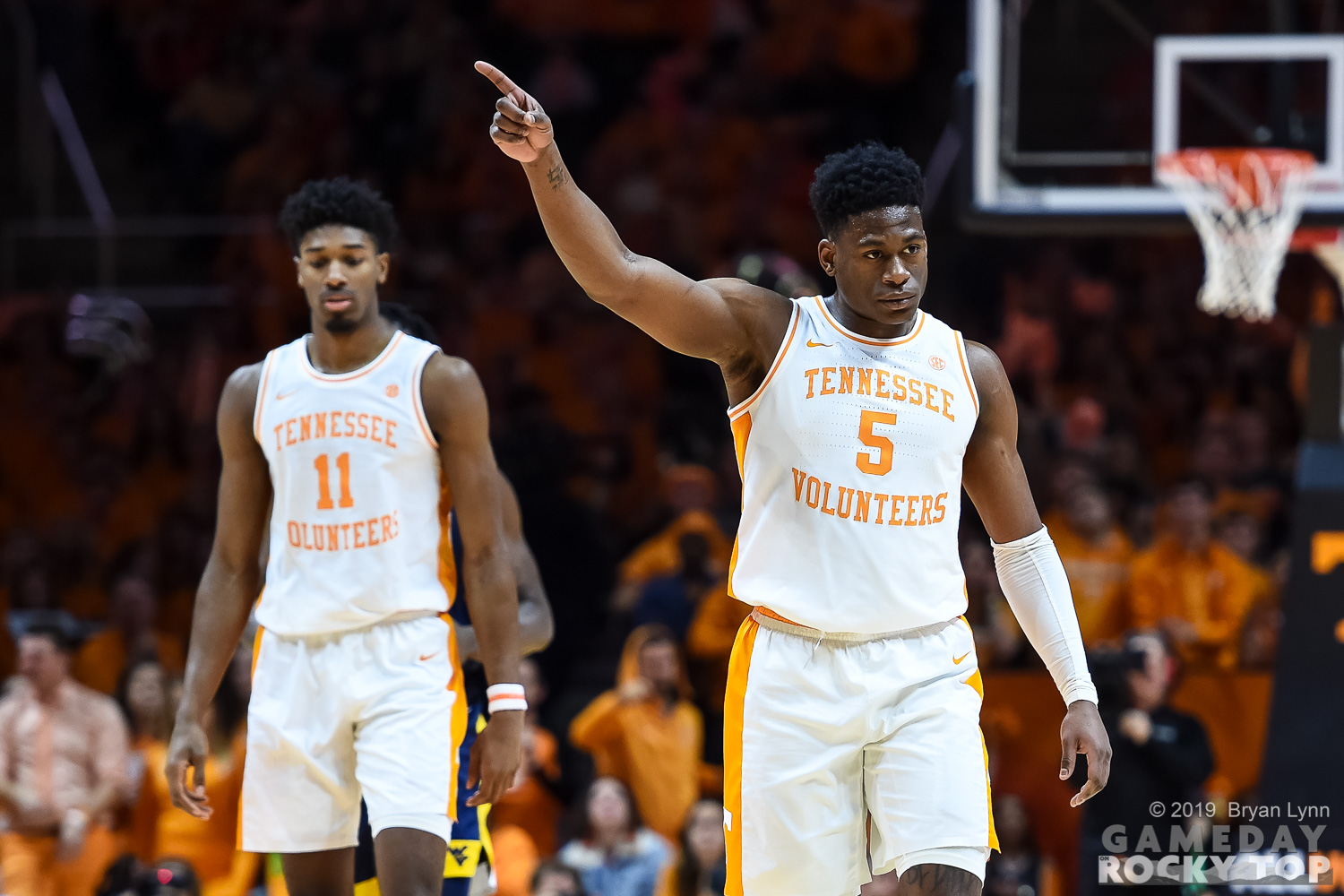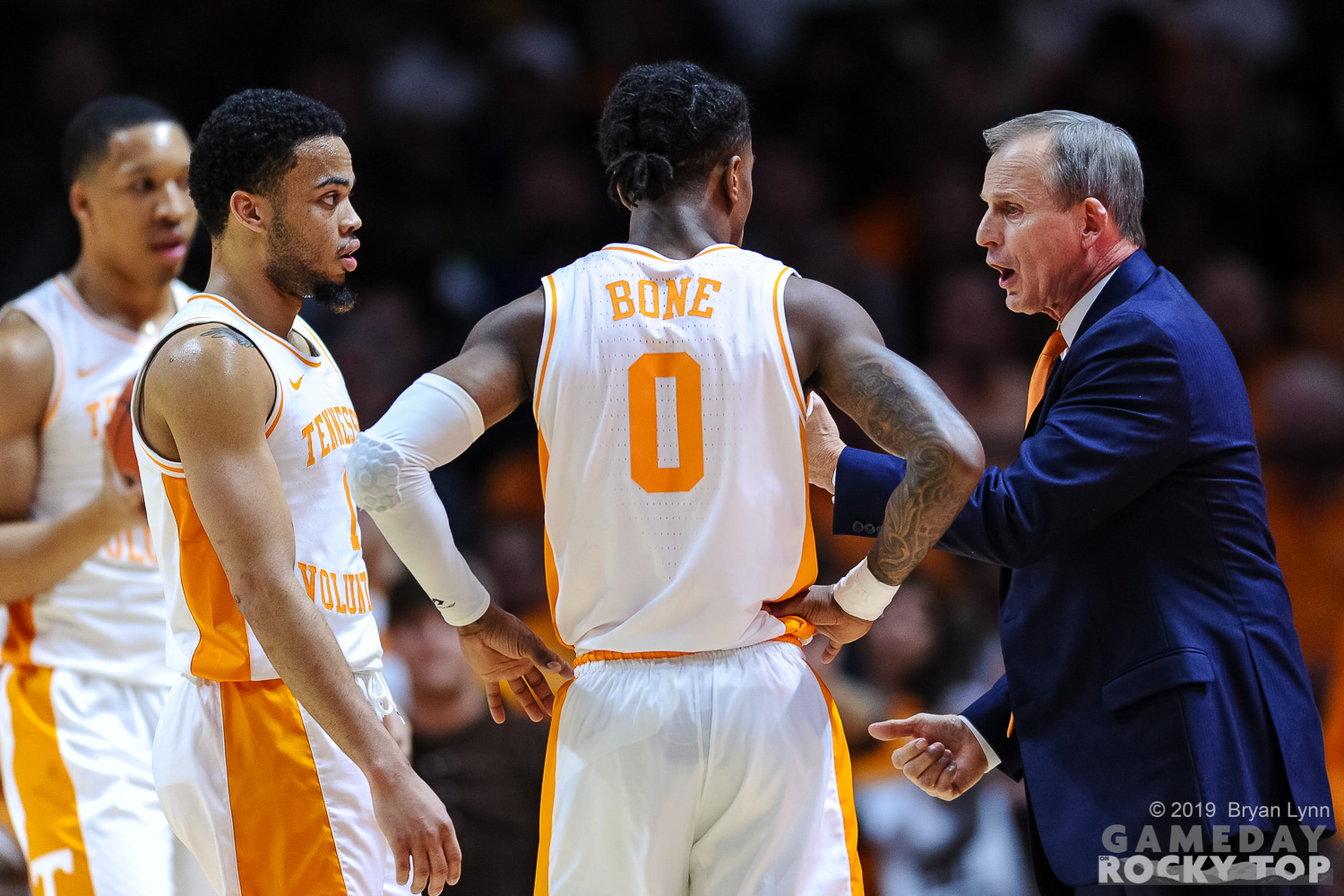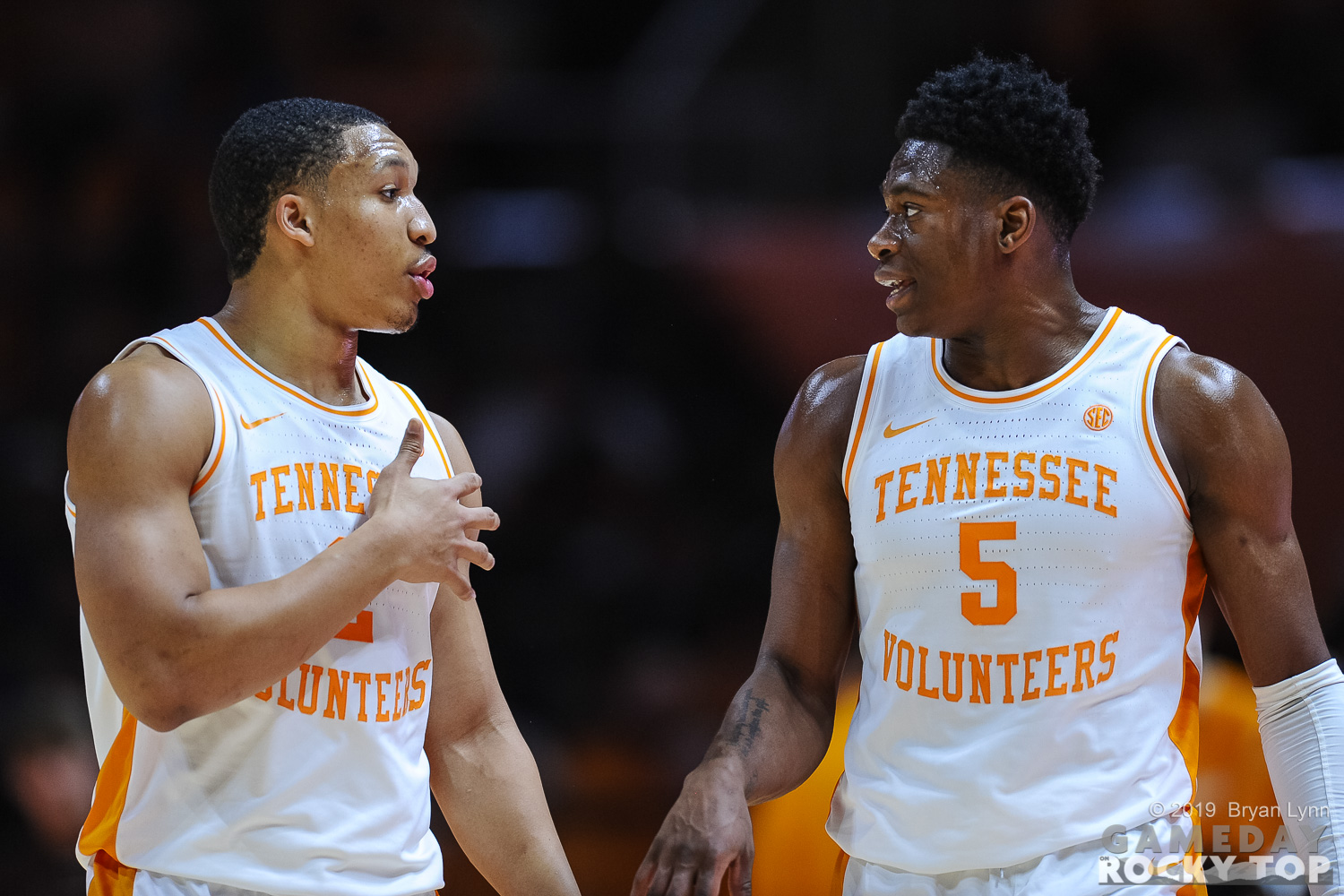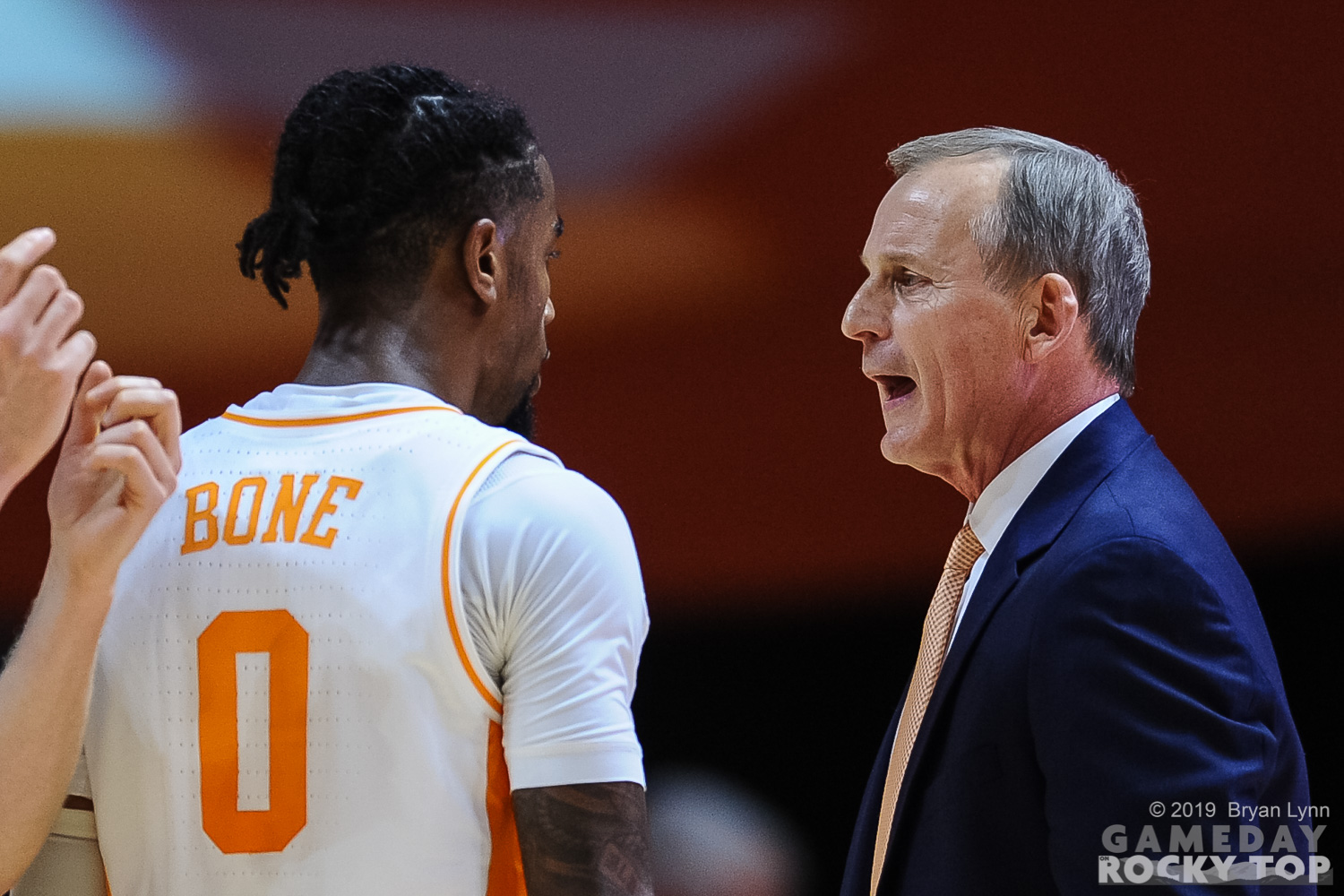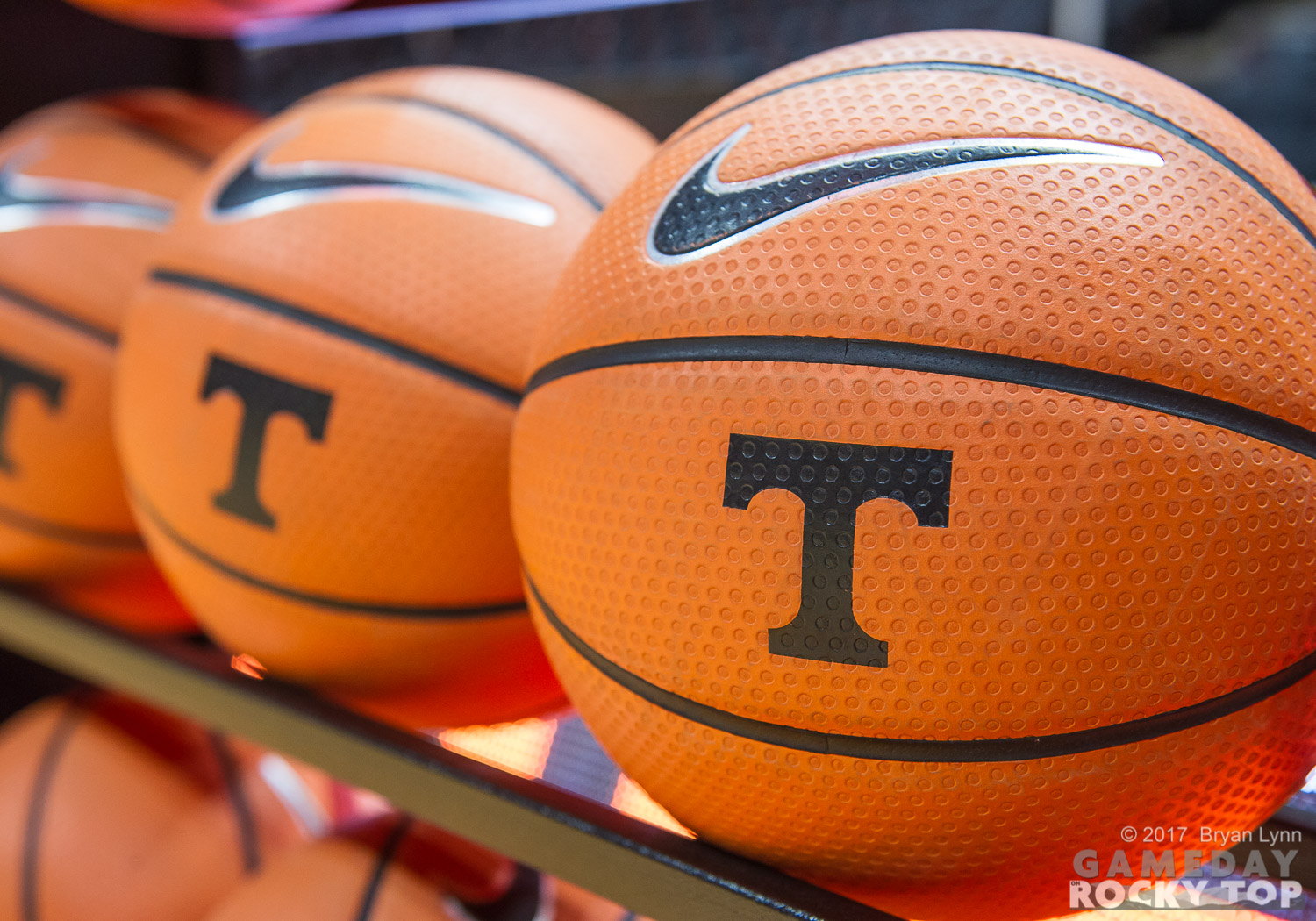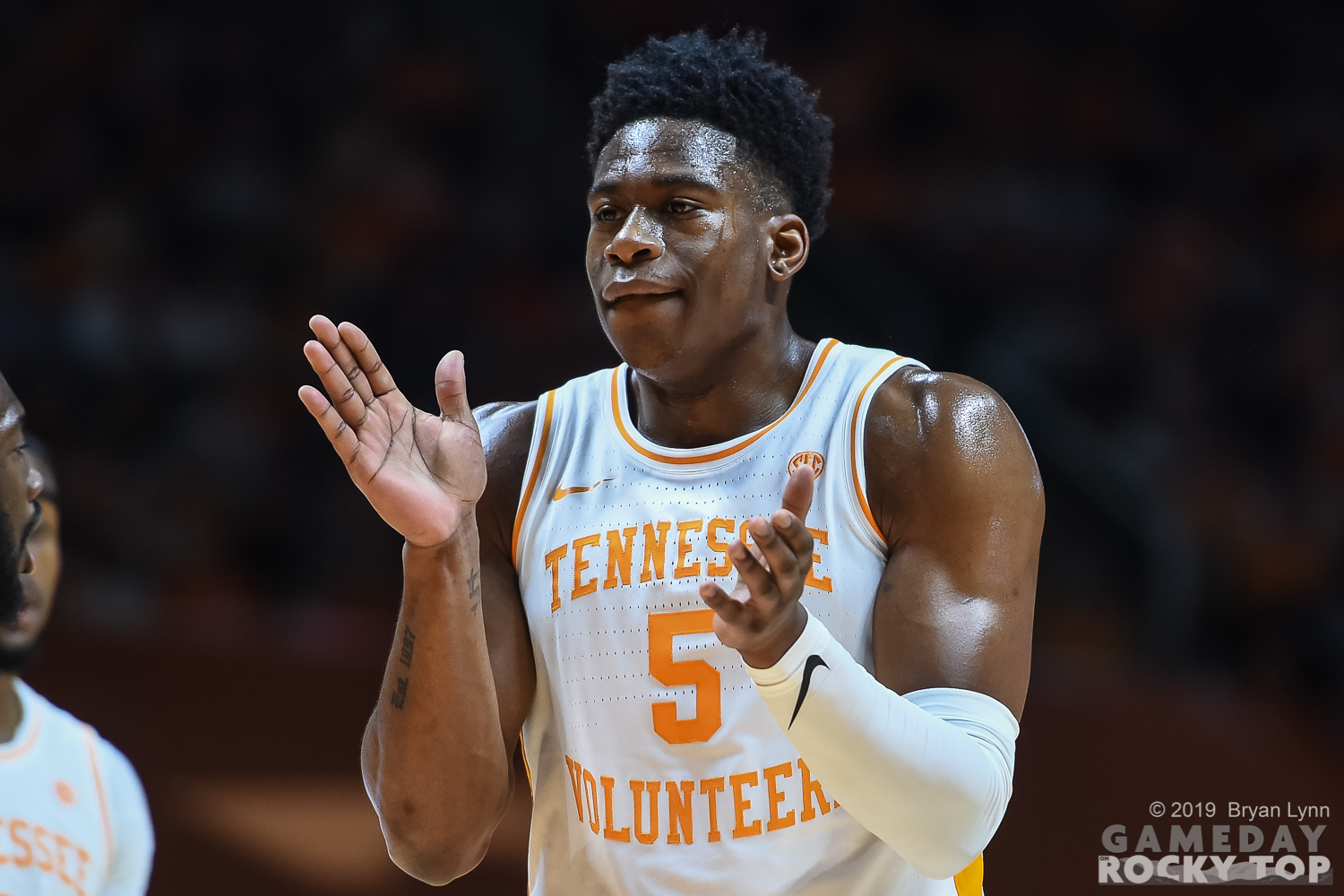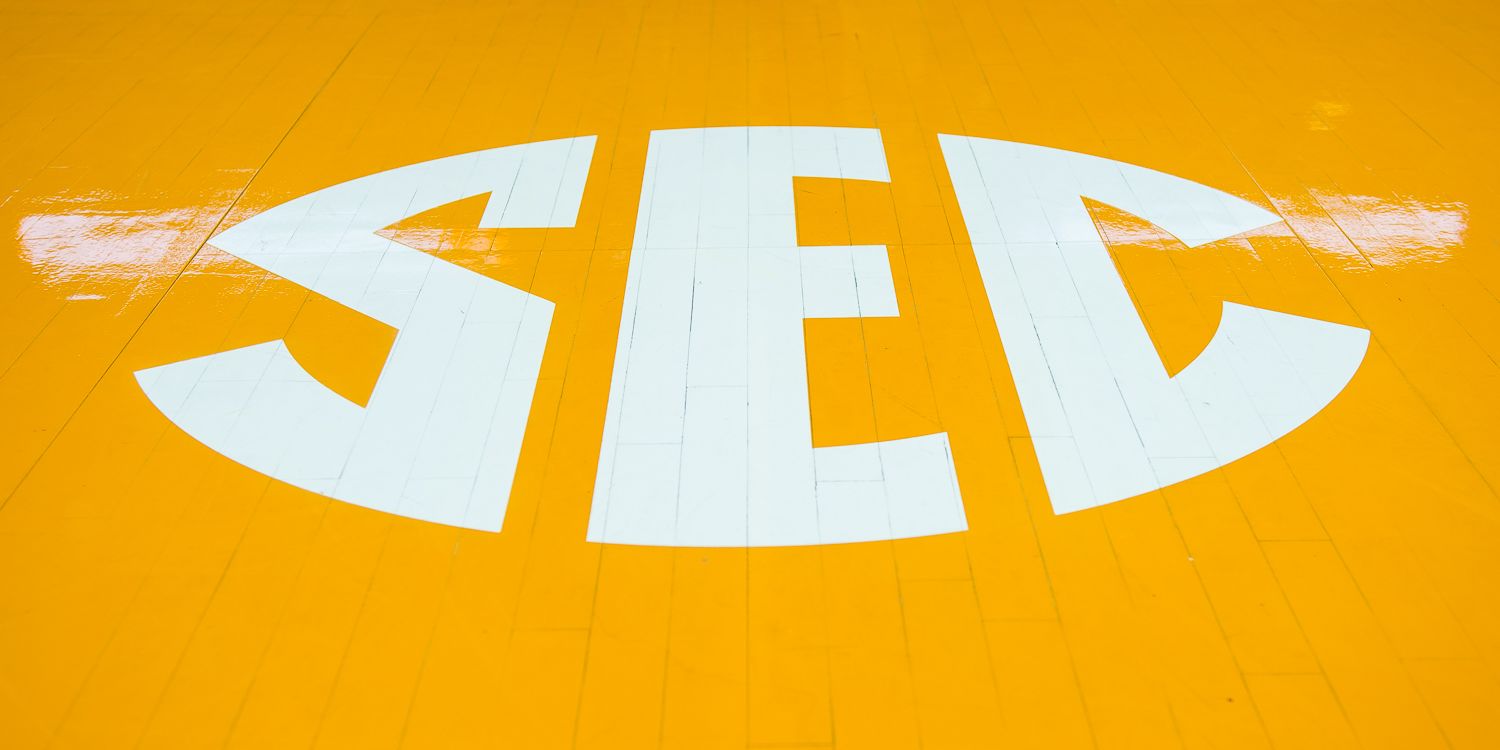There is no easy way to lose one of these. If “easier” exists, maybe it’s what this one looked like for the first 30 minutes: some combination of not our day and the other team just being better. It happened to the other team to win 31 games in school history 11 years ago. Purdue certainly qualifies as a great team.
But Tennessee’s furious rally in the final ten minutes of regulation was seconds away from paying off as both an individual memory to live forever, and an open door to the program’s second Elite Eight appearance. Instead, it goes on the difficult Sweet 16 list. Up seven with 4:30 to play in 2000. Up 20 at halftime in 2007. A generous charge call against Jarnell Stokes in 2014.
I don’t think the refs should be the first or longest memory from this loss. Lamonte Turner got Carson Edwards’ body with enough contact to make that call one I can at least comprehend. We didn’t seem to get an angle to verify the ball went off Edwards’ foot seconds earlier. The refs did botch the final 1.7 seconds, starting the clock a hair early and not giving (not expecting?) a timeout immediately when it was called for, costing the Vols a few tenths of a second. But that part just leads to a hypothetical heave.
What actually happened was some of the very best theater I’ve ever seen in a basketball game on any level. Admiral Schofield and Ryan Cline trading daggers was impossible stuff, creating the kind of game you know you’re going to remember forever and you hope you’re on the right side of its ending. The drama deserved a better ending in regulation than the one it ultimately got in overtime.
That one went like this: Kyle Alexander fouled out, and the Vols were done.
Purdue took 31 threes in regulation. They took zero in overtime: Alexander fouled out with 3:01 to go, and Grady Eifert made two free throws to put Purdue up 87-84. The next two possessions: Carson Edwards with a layup, Matt Haarms with a dunk. Tennessee almost survived Purdue shooting 54% from the floor – the best any opponent shot outside Rupp Arena – and going 15-of-31 from the arc. They could not survive an offense that requires you to defend that without Alexander left in there at the rim.
And yes, Tennessee missed 14 free throws. Purdue missed 17, so it was a wash in the end result. The Vols certainly could’ve done better there, and have all year. Early and often, it was a visual reminder that for all we’ve seen this group of players do – including the most wins in a two-year period in school history – this was still their first Sweet 16. You could tell how happy they were to get here against Iowa, and they earned every bit of it after what happened against Loyola-Chicago the year before.
As Tennessee is still looking for its second Elite Eight and first Final Four, there’s a desire for breakthrough that’s part of the Vols’ basketball DNA. And for several of these heartbreaking tournament losses – 2000 North Carolina, 2007 Ohio State, last year with Loyola – the Vols had so much coming back, you could assume natural progression. And sometimes you get it: the 2001 Vols crashed and burned, but the 2008 Vols got to number one and this team went a round deeper in March. Depending on what Grant Williams and Jordan Bone decide to do, this team can still bring back quite a bit in 2020, plus the program’s first McDonald’s All-American coming in since Tobias Harris.
But this group of players already taught us so much about what you can do with expectations by going from 13th in the SEC two Novembers ago to all of this. I loved writing about this team. They’re fun to watch, and man, they made us proud.
Purdue made their fans proud tonight. Give them credit. This might be the best Sweet 16 field we’ve ever seen, and nothing was coming easy. This is the best Tennessee team of the KenPom era (2002-present). But right now, in that metric Purdue is the best team to knock the Vols out of the tournament other than the No. 1 seed Buckeyes in 2007.
Every season tells a story. We, of course, hoped this team would tell a longer story than we’d heard before. They earned that expectation. Tonight Purdue was better over the course of 45 minutes, leaving us with an ending that will always hurt when it doesn’t involve nets and a ladder. But what a great story this Tennessee team was. And is.
Go Vols.
